Sharpen Your Skills (and Tools)
Uncover these rotary engraving tips and techniques in this feature from the March '19 issue of A&E.
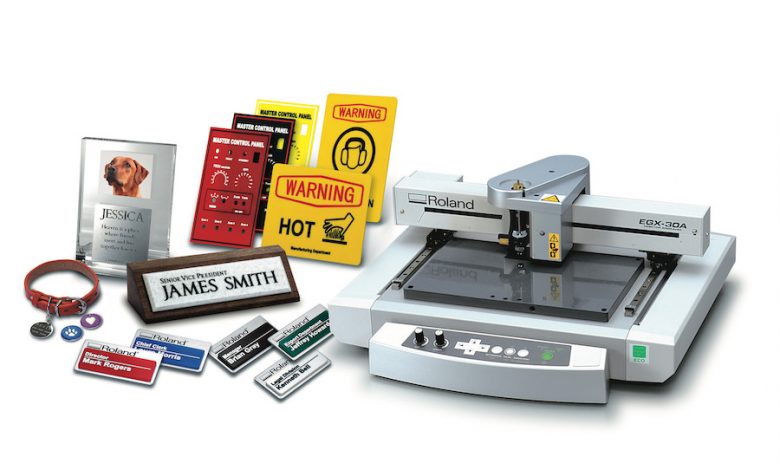
An important part of an awards and customized products shop is continuing to hone skills, both old and new. As technology and substrates continue to evolve, and trends continue to change, keeping on top of techniques is a crucial way to provide customers the best end product. Even if a shop has been running a machine since its opening, letting skills become out-of-date or out-of-practice can ultimately be detrimental to business.
Take rotary engraving for example. A technology that has been around for numerous years, some might think, what’s to learn? Simply answered, there is plenty to learn and keep up on. To get more insight on the topic, A&E enlisted the help of several industry voices to lend their thoughts. It turns out that there’s more to discover than most might think. And while some of the techniques discussed might not be new, it’s always a good idea to revisit something you may have forgotten about.
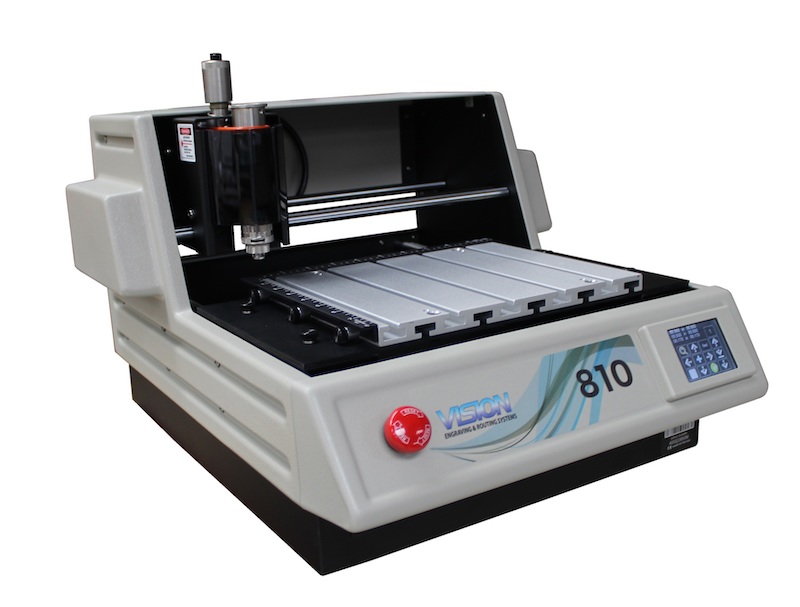
This equipment has a variety of features and capabilities, which can make for a steep learning curve. However, there are a variety of educational options that can help any beginner learn how to use the machine. (Image courtesy Vision Engraving & Routing Systems)
Refresher Course
To truly sharpen and hone your rotary engraving techniques, it’s best to take a refresher course. On the most basic level, rotary engravers use tools to cut into a substrate and remove the material. Of course, this process requires not only the machine, but the cutters and bits, clamps, and software as well. Mastering all of these components is a must.
“An experienced operator is a treat to watch,” believes Fred Schwartz, Quality One Engravers. Running the machine can be a rhythmic and polished process when done correctly. Those who have taken the time to learn about its nuances will be the most successful. But all of our sources stress that it takes time and patience.
According to Zach Houser, Vision Engraving & Routing Systems, taking your time with this technology includes sharpening skills before the machine even gets going. “Taking the time during setup and design can help ensure the piece (you’re working on) comes out as expected,” he emphasizes. He points out that good rotary technique starts at the design phase. Once users have the proper design, setting up the machine comes next. Users will want to ensure they’ve selected the right tool for the job.
Kitt Jones, Roland DGA, builds on this point, stating that testing and experimenting with the tools builds familiarity that will help when the time comes to complete an actual project. And the best way to do that is to run some tests. “For new users, I recommend testing and playing with their machines on sacrificial products or blanks to gain a thorough understanding of not only the machine itself, but also the tools and how they each mark or engrave,” he suggests.
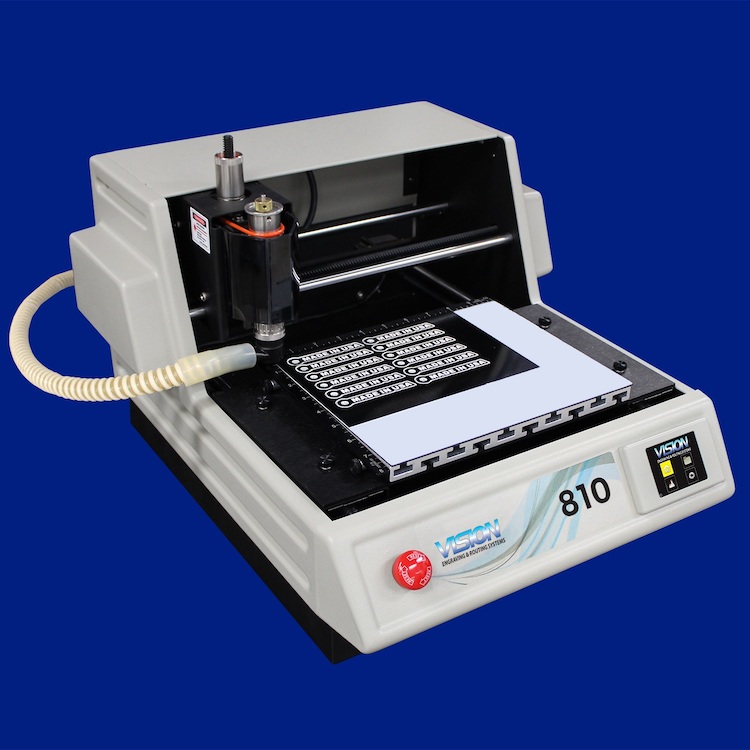
Most machines have general settings for common materials that can be adjusted for job speed and overall performance. (Image courtesy Vision Engraving & Routing Systems)
Boost Your Technique
As users start to feel comfortable with the machine, the best way to boost technique is to take on some projects. When it comes to rotary machines, there are so many options in terms of substrates available to decorate as well as applications that it’s important not to limit yourself.
For best execution, Houser advises to once again start at the beginning. “It is always important to think about the end product at the beginning of any new engraving project,” he states. “Taking this into consideration can save you time and money by eliminating unexpected results.”
For example, rotary machines are capable of engraving on substrates such as steel, aluminum, wood, plastics, glass, granite, ceramic, and even foam. Taking time to familiarize yourself with the substrate you’re working with benefits your final outcome. “With such a wide range of cutting tools available, it all comes down to picking the correct tool and adjusting the machine’s feeds and speeds for the material,” Houser offers.
And because there is such a wide range of substrates available, awards shops should not limit themselves. “Be sure to challenge yourself and start thinking ‘outside the box,'” states Jones. “Be creative and push the engraver to its limit.” Doing so not only serves to improve a decorator’s skills, but also leads to more profit. He adds that this point is particularly crucial to remember if you’ve been using this equipment for a while. “It’s important to realize that, while engravers haven’t changed much over the last decade, the market or environment for profit has evolved.” 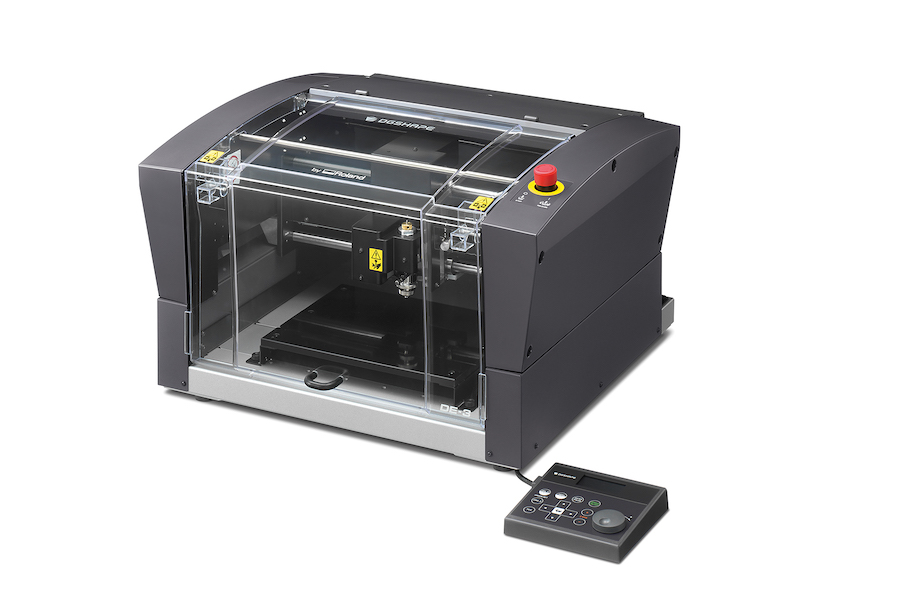
As users start to feel comfortable with their rotary equipment, the best way to boost technique is to take on some projects. (Image courtesy Roland DGA)
Diversity and Profit
Beyond being a versatile piece of equipment by itself, a rotary machine also works well with other technologies. Users who understand both what it can do that other machines can’t as well as what it can do coupled with other equipment are sure to sharpen their techniques.
Touching on the point that rotary machines are capable of decorating on so many items, Schwartz mentions there are some things a rotary can do that other equipment doesn’t shine at. “Braille Raster Beads are easy to do on a rotary engraver; these holes are difficult to produce on a laser,” he cites as an example. In addition, some items such as metals are simply easier to process on a rotary engraver. Schwartz believes that having a rotary in your shop means you can take on more projects.
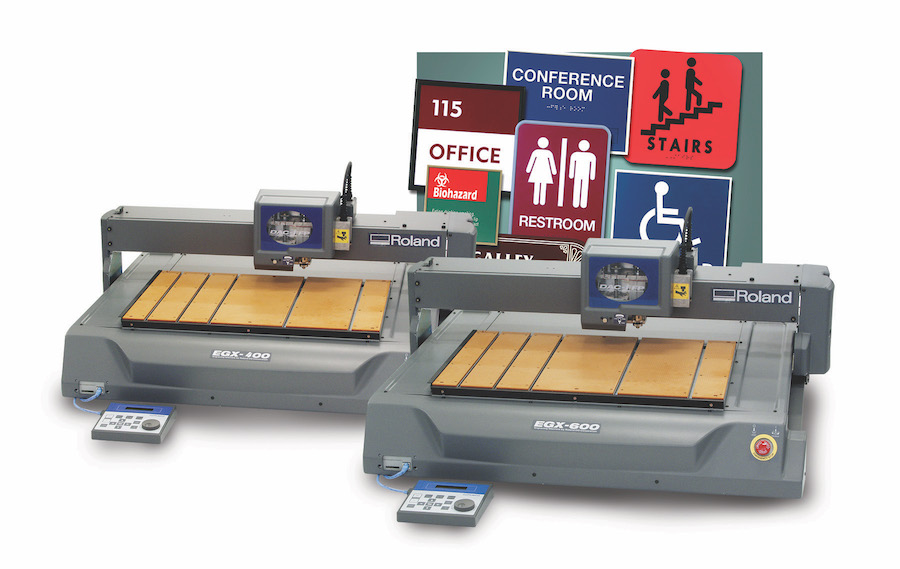
Some applications, such as creating ADA signage, is easier to do with a rotary engraver versus a laser engraver. (Image courtesy Roland DGA)
Of course, that doesn’t mean it should be your only piece of equipment. Broadening skills to include running other equipment not only allows shops to embellish multiple substrates, but also increases the uniqueness of the end products. “Integrating an advanced rotary engraver… into an operation that has any (or all) of the other technologies can help a business grow and succeed,” Jones points out. “It can allow a shop to handle a diverse range of jobs, attract new customers, and create additional revenue streams.” He brings the conversation full circle to the fact that, because markets have changed and diversified, and shop’s techniques and skills should follow suit.
Houser states that this can sometimes pose a challenge. “Having so many features and abilities can make for a steep learning curve,” he says. However, with the availability of education through channels such as YouTube, webinars, open houses, manufacturer training, and more, it’s not hard for users to hone their rotary talents.
As a whole, keeping your skills (and tools) sharp only serves to better your rotary expertise in the long run. “Being able to offer this kind of added value through product personalization and customization can differentiate your business from the competition,” Jones believes. Don’t let that profit spin away from you.
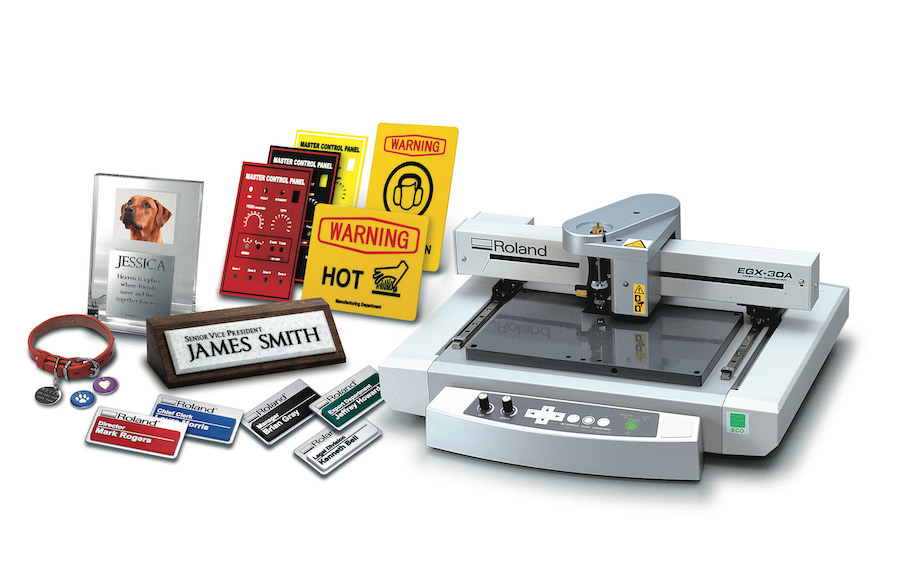
Rotary machines are capable of engraving on substrates such as steel, aluminum, plastics, granite, and more. Take the time to familiarize yourself with the substrate you’re working with. (Image courtesy Roland DGA)